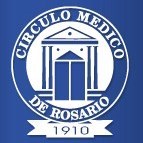Staphilococcus aureus: nasal carriage, risk factors and sensibility to antimicrobials in a population of medical students
Keywords:
prevalence, nasal carriage, risk factors, students, Staphylococcus aureus, medicineAbstract
Introduction: The epidemiological importance of Staphylococcus aureus (SA) lies in its ability to produce nostrils intermittent colonization, which can be a starting point for infections of varying severity in the carrier. CA-MRSA infections have increased in recent years and nosocomial infections caused by SA with a community profile have been reported. Colonized medical students, due to their frequent contact with health care providers, can act as a vector for the spread of this bacterium.
Objective: A descriptive and analytical cross-sectional study was carried out with the objective of determining the prevalence of nasal carriers of Staphylococcus aureus in a population of students of the Medicine career of the Faculty of Medical Sciences of the National University of Rosario, the sensitivity profile to the antibacterials of the isolated strains and the existence of risk factors associated with nasal colonization.
Materials and methods: Samples of nasal secretions were obtained by swabbing from both nostrils and a survey was administered in search of risk factors associated with colonization. The samples were sown in the selective and differential medium salty mannitol agar (Merck®) and incubated for 18-24 hours at 37°C. Conventional biochemical tests were used for identification: coagulase, DNAse (BBL® - DNase Test Agar) and mannitol fermentation. The sensitivity to AMB was evaluated by the diffusion method (Kirby-Bauer). The presence of induction of resistance to clindamycin by erythromycin was sought by means of the so-called D-test. For the statistical analysis, the IBM SPSS Statistics software, version 17.0, was used. The comparisons were made based on the type of variable under evaluation: χ2 tests, or Fisher’s exact probability (for the qualitative ones), and Mann-Whitney U or Student’s t-test, depending on the type of distribution of the quantitative variable. A significance level of p<0.05 was used.
Results: The sample was made up of 1568 students, 1056 (67%) female and 512 (34%) male. The total number of students with SA nasal carriers was 397 (25.3%), 249 (62.7%) being women and 148 (37.3%) men. Of the 397 SA isolates, 376 (94.7%) were found to be sensitive to methicillin (SAMS) and 20 (5.3%) were resistant (MRSA). The results obtained in terms of resistance to erythromycin and clindamycin in MRSA strains show that these drugs are not a valid alternative for the empirical treatment of infections due to this type of microorganism. Although quinolones and trimethoprim-sulfamethoxazole maintain, for the moment, their activity, systematic monitoring in the population is necessary. Regarding risk factors, male sex and diabetes were associated with nasal colonization by SA.
Conclusions: The detection of this microorganism in the nostrils of medical students is very useful to avoid horizontal transmission and prevent possible dissemination in the carrier, causing infections with different levels of severity.
Downloads
Published
How to Cite
Issue
Section
License
Copyright (c) 2023 F Brandolisio, L Revelli, B Sáez, M Rodríguez Lanza, A Berrón, C Faggi, R Madoery, T Giménez, L Córdoba, M Bulfoni, C Cerutti, A Ponessa, T Gambandé

This work is licensed under a Creative Commons Attribution-ShareAlike 4.0 International License.
Licencia Atribución-CompartirIgual 4.0 Internacional (CC BY-SA 4.0)
https://creativecommons.org/licenses/by-sa/4.0/deed.es






